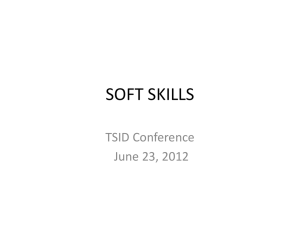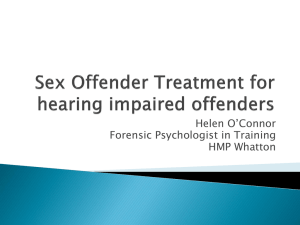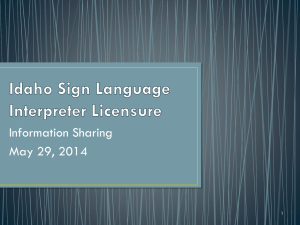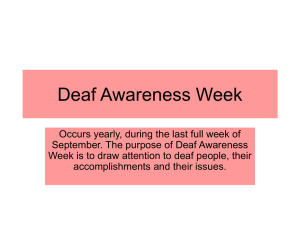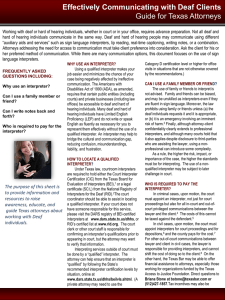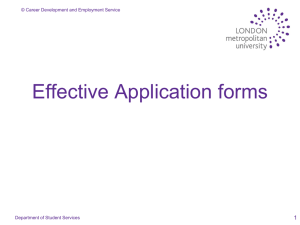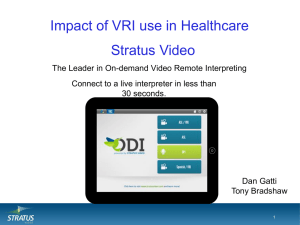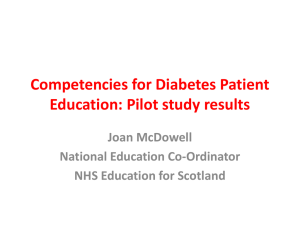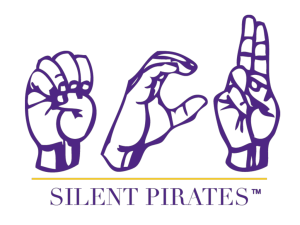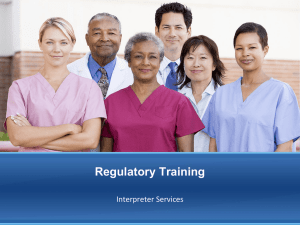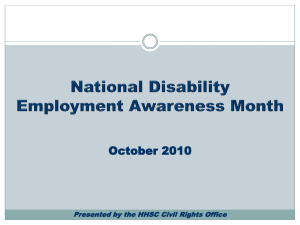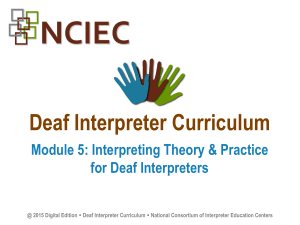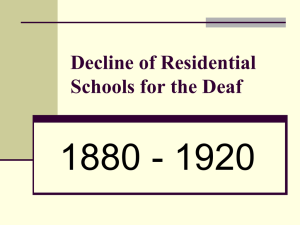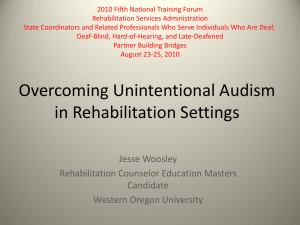DI_Curriculum_CIT_PPT_101712
advertisement
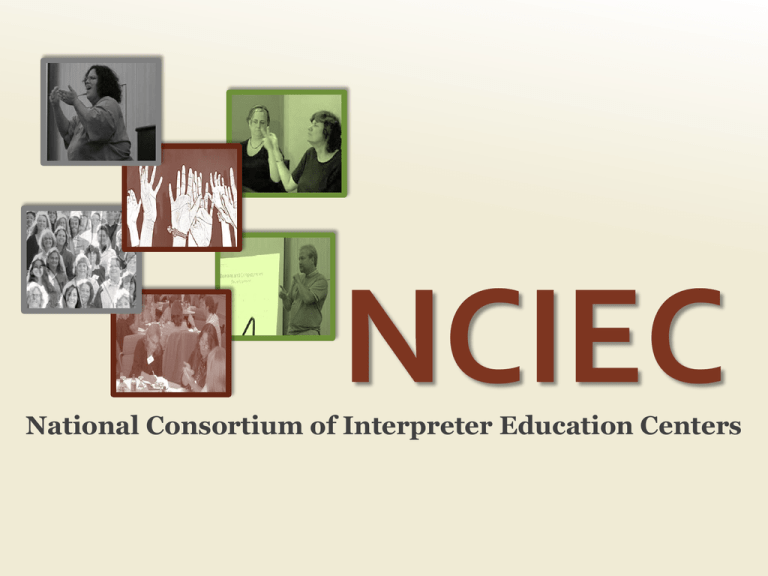
NCIEC National Consortium of Interpreter Education Centers Preview of New Curriculum for Deaf Interpreter Education Jimmy Beldon and Eileen Forestal In behalf of NCIEC DI Curriculum Development Team Consortium Mission to connect and collaborate with diverse stakeholders in order to create excellence in interpreting technical assistance cross-center collaboration communication dissemination resources educational opportunities knowledge transfer National Center Northeastern University NURIEC WRIEC Northeastern University CATIE Center Western Oregon University El Camino College St. Catherine University GURIEC MARIE Center University of Northern Colorado Gallaudet University DI Initiative Purpose To improve access to interpreting services for individuals who are Deaf, Deaf-Blind, and hard-of-hearing, especially those underserved and atrisk adults and youths www.nciec.org/ DI Initiative Outcome Advancement of the practice and education Greater understanding of the role of the Deaf Interpreter Competencies required for successful practice, & benefits offered by Deaf Interpreters Resources and learning opportunities for and about Deaf Interpreters www.nciec.org/ Deaf Interpreter Competencies NCIEC Deaf Interpreter Work Team (2010). Toward effective practice: competencies of the Deaf Interpreter. National Consortium of Interpreter Education Centers. For a copy of the full report, please go to: diinstitute.org/resources www.nciec.org/ Competencies of All Interpreters Generalist Competencies Theory and Knowledge Human Relations Language Skills Interpreting Skills Professionalism Specialty Competencies Mental Health Medical Legal Vocational Rehabilitation Video Relay, etc. Specialized Competencies Foundational Language, Culture and Communication Consumer Assessment Interpreting Practice Elicitation Competencies Production Competencies Monitoring & Clarification competencies Teaming Competencies Professional Development Specialized Competencies Foundational Language, Culture and Communication Consumer Assessment Interpreting Practice Elicitation Competencies Production Competencies Monitoring & Clarification competencies Teaming Competencies Professional Development Thanks to DI Work Team Partners Cathy Cogen NCIEC Staff Lillian Garcia Peterkin Alberto Sifuentes Cynthia Napier Eileen Forestal Debbie Peterson Patrick Boudreault Steven Collins www.nciec.org Jimmy Beldon Priscilla Moyers Carole Lazorisak Current Grant Cycle 2010 - 2015 interpretereducation.org DI Curriculum Development Team 2010 - 2015 James Lipsky, Lillian Garcia Peterkin, Cynthia Napier, Eileen Forestal, Stephanie Clark, Chris Kurz and Jimmy Beldon Curriculum & Resource Development for DI Preparation interpretereducation.org Deaf Interpreter Preparation: A Comprehensive Curriculum Module 1: Deaf Interpreters: Past, Present and Future Module 2: Consumer Assessment Module 3: Ethnic and Cultural Diversity Module 4: Ethical Considerations and Challenges for Deaf Interpreters Module 5: Practice to Theory for Deaf Interpreters Module 6: Team Interpreting Pilot of the Modules Road to Deaf Interpreting Program, Massachusetts 18 month program Meets once a month Saturday all day and Sunday half day 13 Deaf students Four modules taught so far (March – June 2012) Two more modules (Dec. 2012 and April 2013) Parts of modules spiraled in other sessions Example of One Module Practice to Theory for Deaf Interpreters Title of Module: Practice to Theory for Deaf Interpreters Overview of Module: Purpose of the Module: Competencies: Anticipated Outcomes: Assessment: Competencies Competency # 2 (Language, Culture, and Communication Competencies) Competency # 3 (Consumer Assessment Competencies) Competency #4 (Interpreting Practice Competencies) Units of Learning: Interpreting Practices Unit 1: Translation Unit 2: Consecutive Interpreting Unit 3: Simultaneous Interpreting and Continuum of CI & SI Unit 4: Mirror Interpreting Unit 5: Considerations for Working with Consumers Interpreting Theories (How they are applied to the practice of Deaf Interpreters) Unit 6: Colonomos’ Process Model Unit 7: Cokley’s Sociolinguistic Model Unit 8: Gish’s Information Processing Unit 9: Gile’s Effort Model Unit 10: ASL-English Discourse in Interpreting Units Each unit contains all or most of below: Lectures with PowerPoints Videos of ASL translation of selected articles and readings Videos for demonstrations and analysis of Deaf Interpreters at work Observations of Deaf interpreters working in the community Collaborative activities and learner presentations Application of theory to practice and practice to theory Videotaping Self-analysis and peer analysis with instructor analysis Module Assessment: Pre-and post-tests Class observation Informal formative assessments Participation Participant Interviews Out-of-class assignments Instructor Interview Next Steps? Revised Modules Find qualified Deaf trainers Train the Trainers Dissemination plan New Look of DII Website! DIInstitute.org Learning & Networking for & about the Deaf Interpreter A Quick Survey 1. Are Deaf students enrolled in the IEP in your state? 2. Do the IEP include information/training about Deaf interpreter ? 3. Does the IEP provide HI/DI team training? Questions & Answers Any thoughts? Any suggestions? Miss something? interpretereducation.org For more information, check out… Diinstitute.org Interpretereducation.org Thank You! Contact us with Questions and Comments NCIEC DI Curriculum Development Team Lillian Garcia Peterkin l.garcia@neu.edu interpretereducation.org Connect with us on www.interpretereducation.org Join our mailing list The Consortium Centers are funded by grants from the U.S. Department of Education, Rehabilitation Services Administration, Training of Interpreters Program CFDA 84.160A and 84.160B.
